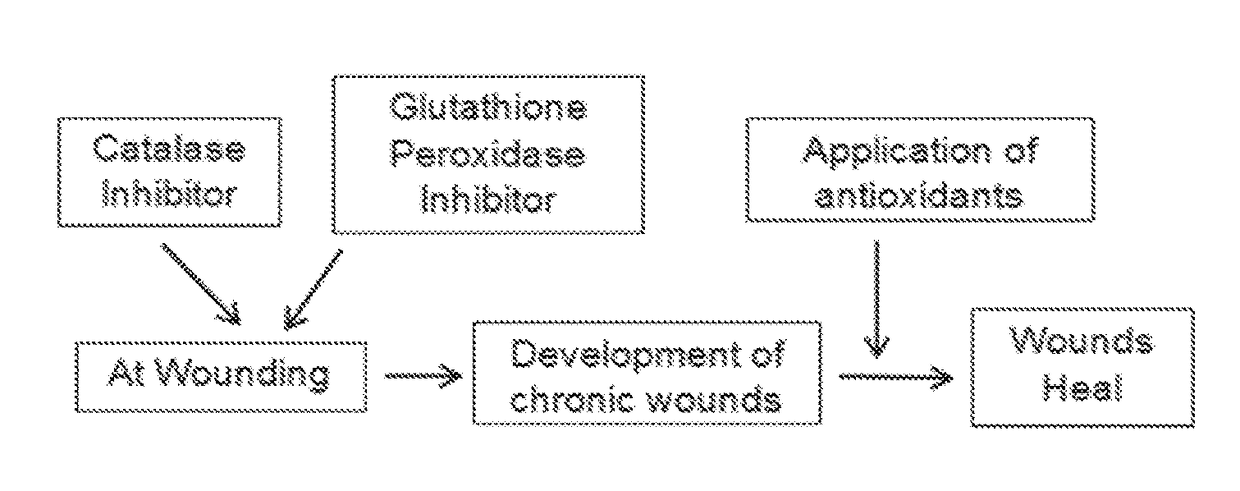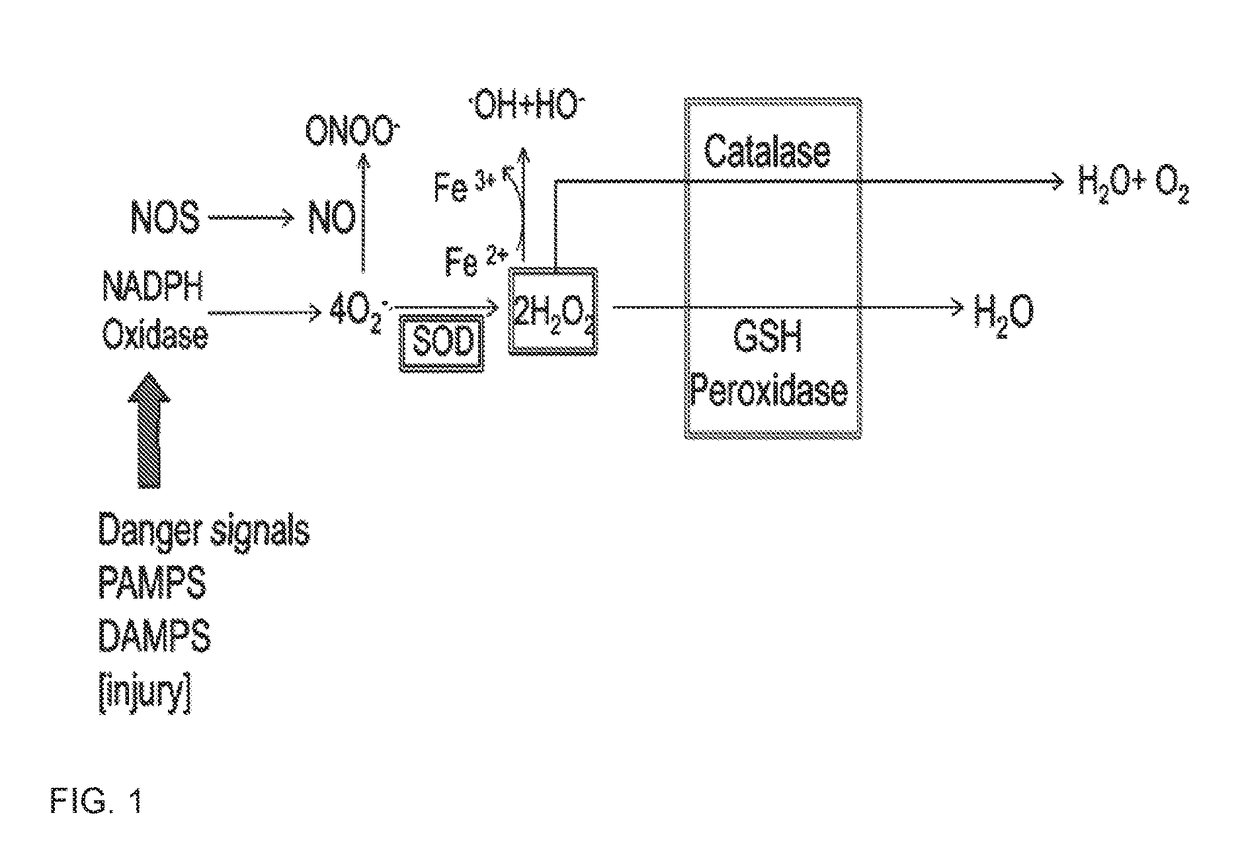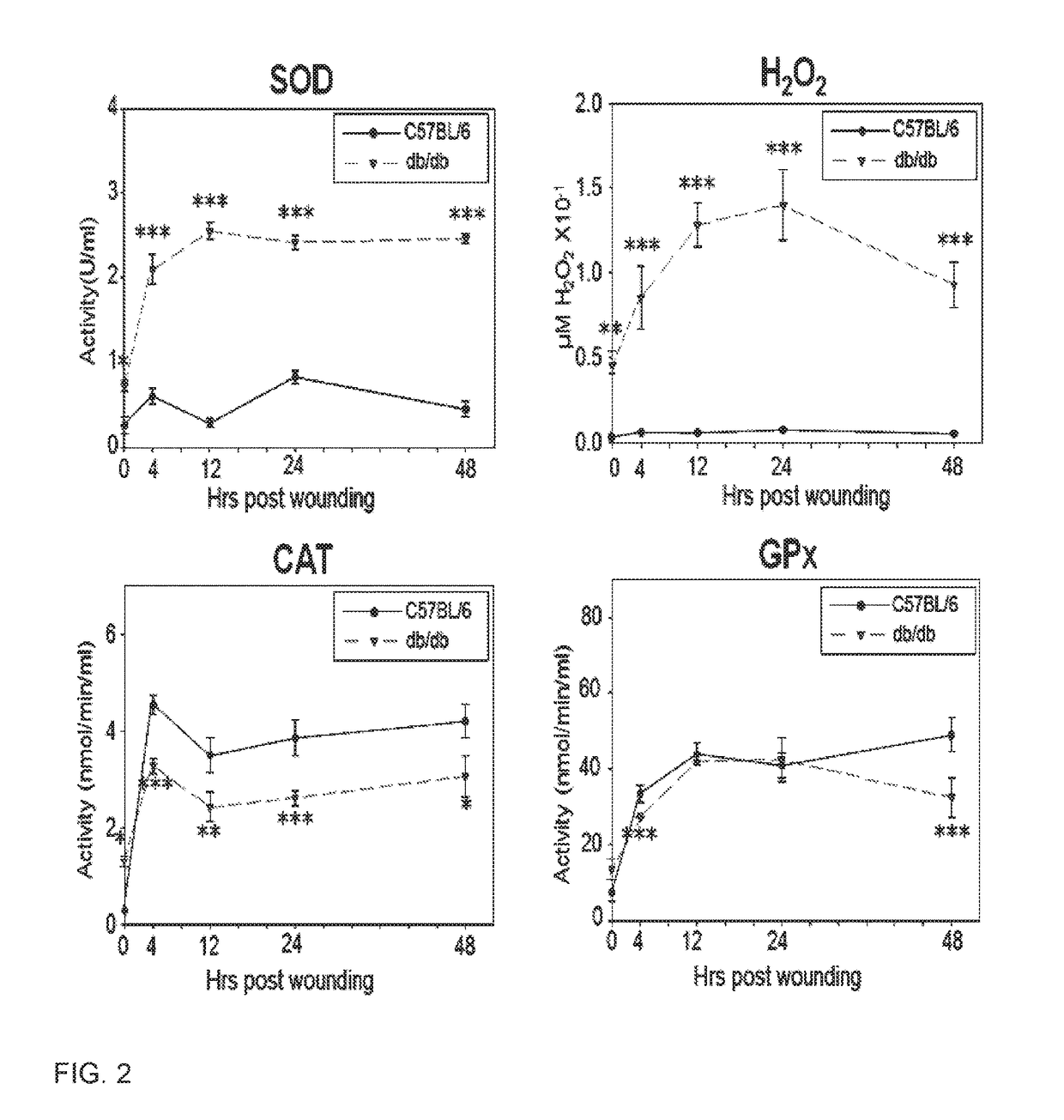Wound healing
a wound and wound technology, applied in the field of wounds, can solve the problems of critical evidence of causality already lost, difficult human tissue collection, etc., and achieve the effects of improving the re-epithelialization of wounds, reducing wound infection, and increasing wound healing ra
- Summary
- Abstract
- Description
- Claims
- Application Information
AI Technical Summary
Benefits of technology
Problems solved by technology
Method used
Image
Examples
example 1
[0047]The methods in this Example were described in Sandeep Dhall, Danh C. Do, Monika Garcia, et al., “Generating and Reversing Chronic Wounds in Diabetic Mice by Manipulating Wound Redox Parameters,” Journal of Diabetes Research, vol. 2014, Article ID 562625, 18 pages, 2014. doi: 10.1155 / 2014 / 562625, incorporated by reference herein.
[0048]Dermal Excision Wound Model, Preparation of Tissue for Extracts and for Histology
[0049]The surgical procedures discussed here were approved by the Institutional Animal Care and Use Committee of the University of California, Riverside. Buprenex and ATZ are administered 30 and 20 minutes before surgery, respectively. The mouse is then placed in an enclosed container that is hooked up to a isoflurane vaporizer in the chemical hood. Once the mouse is knocked out or no longer moving, it is placed on a white surgical pad and the head is fitted with a nose cone that is secured to allow continuous administration of isoflurane for the duration of the surge...
example 2
[0063]This Example shows whether early reduction in the antioxidant capacity immediately after wounding leads to the development of chronic wounds and whether application of antioxidants to these chronic ulcers reduces the oxidative stress and leads to restoration of normal healing.
I. Excessive Redox Environment in Impaired Wounds of the Diabetic Mouse Model, db / db− / −, Mimics the Environment Present in Human Chronic Wounds
[0064]Understanding how wounds become chronic will provide insights to reverse chronicity. We hypothesized that the high levels of oxidative stress (OS) in wound tissue is a critical component for generation of chronicity. To test this possibility we used the db / db− / − model of impaired healing and tested for key molecules involved in oxidative stress during wound healing (data are shown in the Figures). FIG. 1 shows a simplified version of the ROS / NOS cycle. We examined the levels of the molecules depicted in the boxes (FIG. 2). As early as 4 hrs after wounding, we...
PUM
| Property | Measurement | Unit |
|---|---|---|
| thickness | aaaaa | aaaaa |
| OD | aaaaa | aaaaa |
| antioxidant | aaaaa | aaaaa |
Abstract
Description
Claims
Application Information
 Login to View More
Login to View More - R&D
- Intellectual Property
- Life Sciences
- Materials
- Tech Scout
- Unparalleled Data Quality
- Higher Quality Content
- 60% Fewer Hallucinations
Browse by: Latest US Patents, China's latest patents, Technical Efficacy Thesaurus, Application Domain, Technology Topic, Popular Technical Reports.
© 2025 PatSnap. All rights reserved.Legal|Privacy policy|Modern Slavery Act Transparency Statement|Sitemap|About US| Contact US: help@patsnap.com



